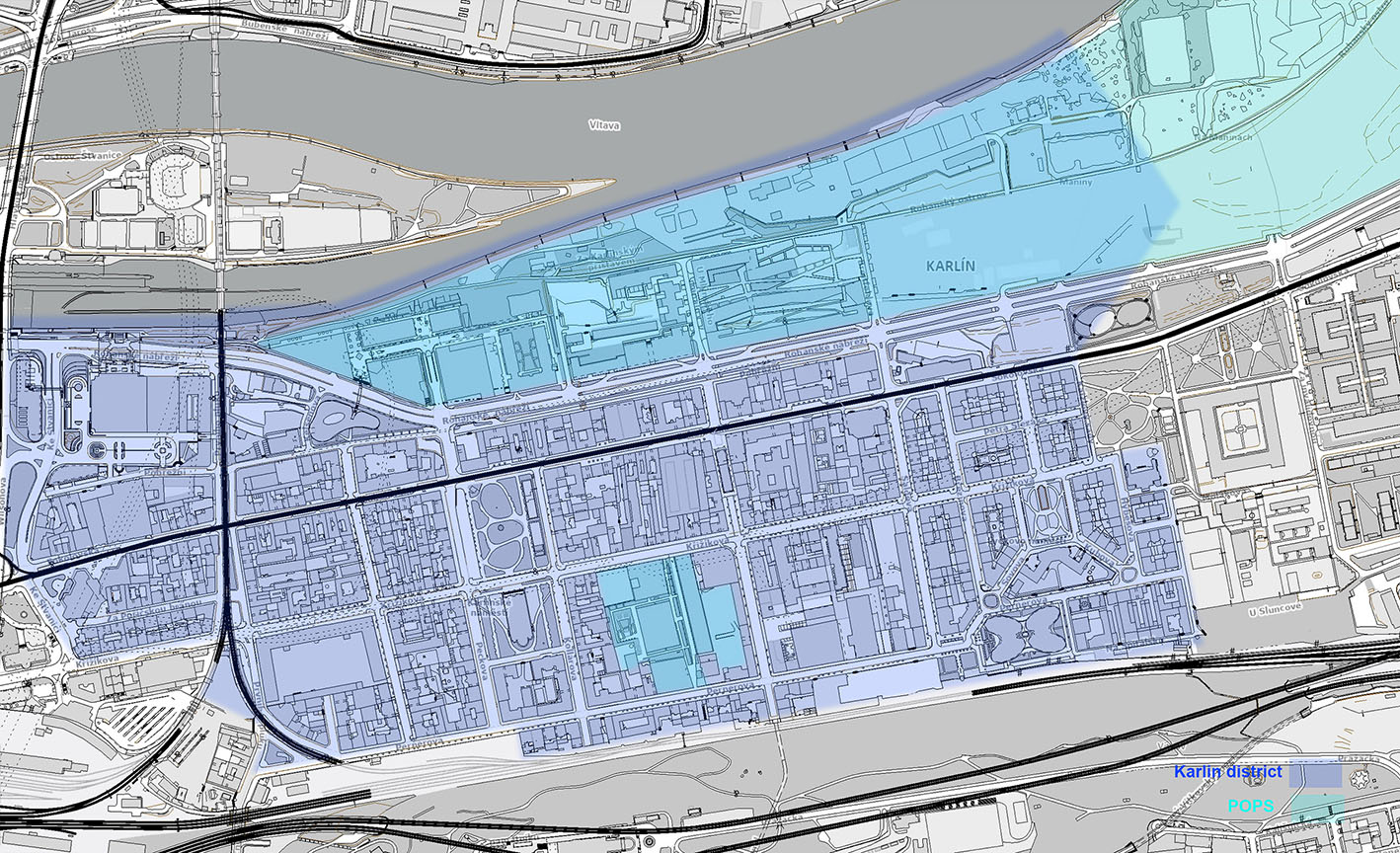Location
The Karlín district, until the fall of communism in 1989, consisted mainly of turn-of-the-century apartment buildings combined with the industrial areas of the time. The population was made up of old-timers together with a strongly represented Roma minority introduced during totalitarianism by communist social engineering. Originally a rather neglected district, close to the historical center of Prague, it was heavily flooded in 2003, necessitating the reconstruction of the entire area. As a result, Karlín became the focus of interest for investors who, over the following years, took advantage of low land prices and, in addition to revitalizing historic houses, built entire blocks and streets of new office and apartment complexes on the site of the urban wilderness. The composition of the former population has changed considerably, mostly in relation to housing prices. This has transformed what was once an urban working-class neighborhood into a profit-driven area, which is interesting for my focus: looking at the problematic sites within public space.
POPS in Prague
So far, there has yet to be any research dealing with the enumeration of POPS in Prague that I can rely on. However, it can be stated that over the past two decades, Prague has experienced a construction boom of massive proportions, based mainly on the use of countless brownfields and unused areas which in the past were primarily industrial sites. One example is Smichov City, the largest construction project currently being built in Prague, covering an area of 22 hectares on the site of the former freight railway station. Another is the controversial Central Business District Masarykovo nádraží in the city center. Other examples of POPS are: the Brumlovka district, the River City Prague complex, Rohan City at Rohanský ostrov and Corso Karlín in Karlín, business districts in Pankrác, Stodůlky, Libeň, and many others.
Problem of invisibility
The most frequently mentioned controversial phenomena associated with POPS can be summarized in the following points (Carmona and Wunderlich 2012: 267):
- they are mainly consumer-oriented,
- they are controlled by private entities,
- their appearance is homogenized (all look the same),
- they are reserved only for certain groups of users.
Critical reflections on public space are well known to academics and experts, and in my own experience with this topic I encounter the difficulty of proving or making evident certain negative phenomena (see the artist’s book What You See Is What You Think, which deals with the interpretation of commodification and the increasing control of cities and serves as the textual basis for performative lecture walks). One of the reasons for this may be a specific psychological moment where elements of new architecture that offer a fresh modern aesthetic and a high standard of comfort may be meeting the needs of many users. This makes it easier to overlook the more problematic issues of POPS, such as the absence of minorities and excluded groups, the reduction of civic life to consumerism, or the control of space through a set of overly restrictive rules that are mostly not obviously accessible.
